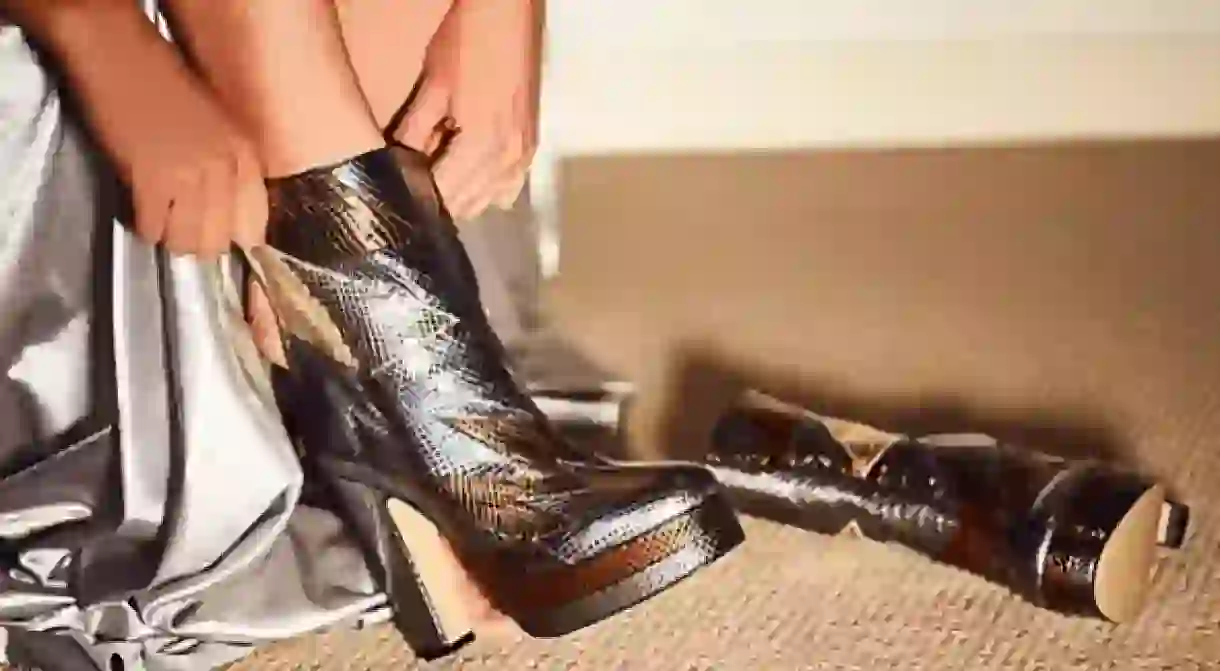A Brief History of Terry de Havilland: Islington's Most Famous Designer

It has been said that shoe designer Terry de Havilland was destined for a career in fashion design. It was in his genes. Born into a family where his father made shoes for his mother in their family-run business – more often than not an ankle-strap style favoured by the Windmill Girls of the 1940s – he was acutely aware of the art from a very early age. Here, we take a look at the history of the designer and his namesake label to uncover what makes it so special.
https://www.instagram.com/p/BZivLsflms5/?taken-by=terrydehavilland
It wasn’t until 1960 (after working alongside his father in their workshop from the age of 5) that de Havilland designed his first shoe. The celebrated platform, block-heel silhouettes that remain relevant today, were officially born. In 1964, his shoes were featured in Queen magazine, making them instantly famous, and by 1969, de Havilland had honed his craft. The most iconic silhouette, the Margeaux, first made its appearance in the 1973 collection – a striking three-tiered wedge originally imagined in vivid multicolour snakeskin that perfectly captured the disco era.
The shoes that de Havilland created reflected the eclectic, rave-fueled, drug-induced party scene of the time, each pair more elaborate than the next and many with a celebrity foot to wear them. Bianca Jagger and Bette Midler famously adopted the Margeaux as their own and in 1997, Geri Halliwell sported a pillarbox red style to meet Nelson Mandela. It’s fair to say that the look initially established by de Havilland almost 50 years ago has gone full circle, as we nod to the 1970s with much of what we wear today. Perhaps that’s the true sign of success?
In 1972, Cobblers to the World, de Havilland’s first store, opened on the King’s Road, and the launch party was famous for providing the ‘three cs’: champagne, cocaine and caviar. Despite his love of late night partying, by 1980, de Havilland’s business was making over 800 pairs of shoes per day for its global customer base. He launched a secondary label, Kamikazi, to cater for a more gothic taste that suited his aesthetic in new and experimental ways.
De Havilland married his wife Lizzie – a textile designer – in 2003 and they worked together on the collections, with him creating the shoe designs and her working with the fabrics. In 2006, he was nominated as Accessory Designer of the Year at the British Fashion Awards and in 2011 he was awarded the Lifetime Achievement award. Now, at nearly 80 years old, de Havilland has taken a step back from the business, officially handing it over in 2015. Many of his historic creations can be found in design museums around the world.
https://www.instagram.com/p/BC2s-0hhcqU/?taken-by=terrydehavilland
Save
Save
Want more fashion? Read the history of Vivienne Westwood here.













